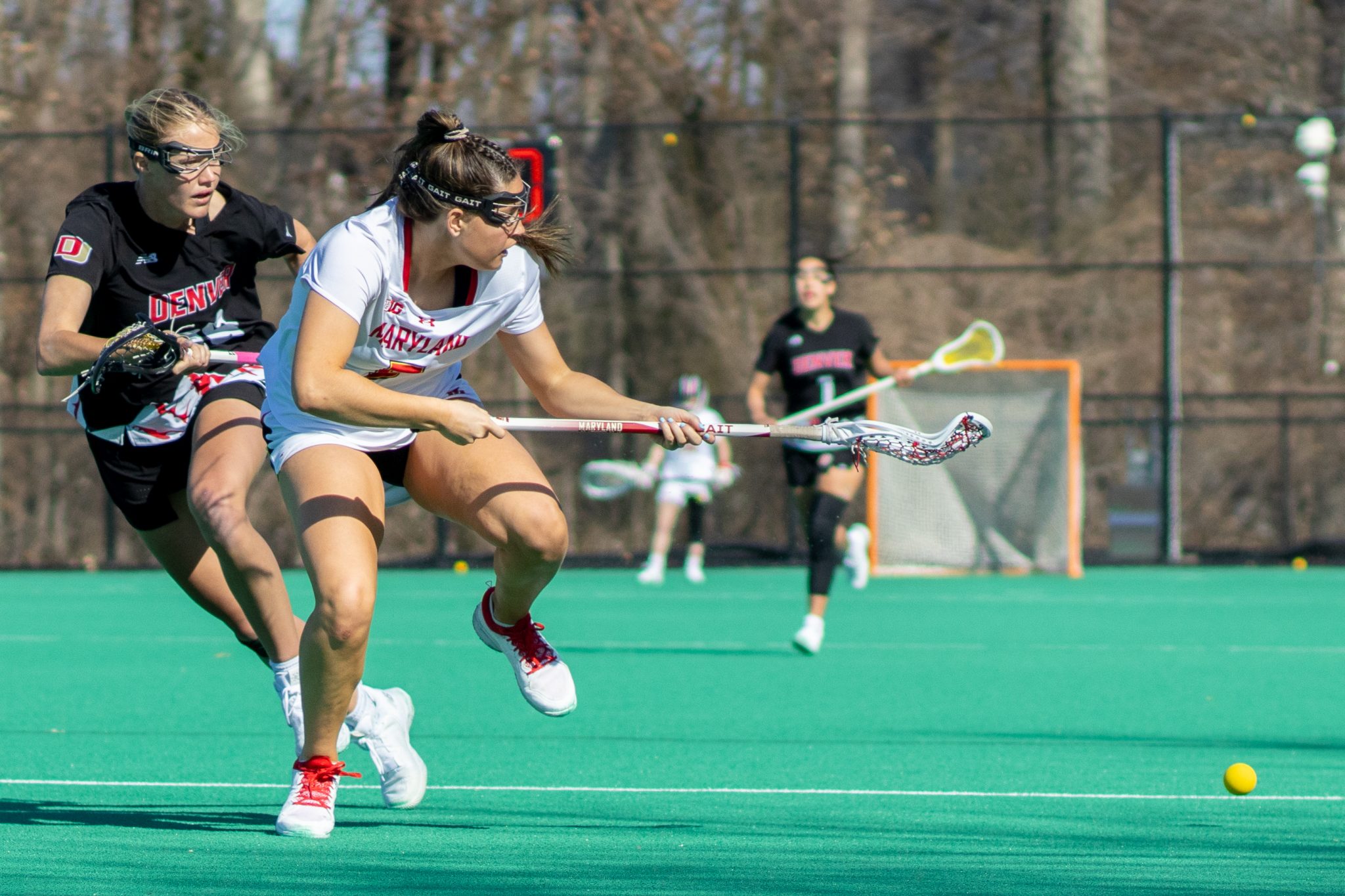Maryland women’s lacrosse entered its Saturday contest against Northwestern the winners of six straight. The Terps had rocketed up to No. 4 in Inside Lacrosse’s rankings.
But their results weren’t clean — they averaged 17 turnovers over the last three games of that stretch. That lack of care cost them against the top team in the Big Ten.
Maryland amassed 21 turnovers against the Wildcats, limiting its offense to a season-low four goals while allowing seven different Northwestern players to score — the most goalscorers the Terps have allowed all year. This resulted in Maryland’s largest margin of defeat since 2021.
“We lacked discipline all over the field,” coach Cathy Reese said. “I think we saw a lot of things that we would do differently if we had the chance to. I just think we had a lack of toughness all over the field.”
Reese said she wants the Terps to turn the ball over fewer than 10 times a game. They’ve achieved that just once, in their largest win of the season over a month ago.
In Maryland’s previous three wins, it was able to limit the turnover impact through stout defense and an advantage in the draw circle. While the Terps finished with a 14-9 draw control edge against Northwestern, this advantage was limited as they had six turnovers come almost immediately after securing draws.
[No. 5 Maryland women’s lacrosse rides third quarter surge to defeat Penn State, 19-11]
“Northwestern did a really good job of their circle people crashing hard on the ball,” Reese said. “We need to scoop and pass real quickly [and] we can’t hold on to it when you play against a team that’s that fast, cause there’s two people right on you ready to take it.”
When the Terps managed to get the ball into the attacking third, they struggled to break the Wildcats’ defensive pressure. Northwestern often started pursuing the unit outside the 12-meter marks.
Denver used a similar style of far zone defense against Maryland on March 1, which put the Terps in a one-goal deficit at halftime. They were able to rally for nine second-half goals against the Pioneers, but only scored twice in the final half on Saturday.
Maryland steadied its second-half offense versus Denver through dominance in the draw control. Increased possessions, with quicker and more decisive passing on the offensive chances, resulted in only five second half turnovers.
But the Terps weren’t able to manage a similar turnaround against Northwestern.
The Wildcats sent double teams that attacked the hands of the ball carrier whenever Maryland reached the interior of the defense, which forced quick turnovers and let Northwestern run in transition.
[Team USA enhanced Kori Edmondson’s defensive skills for Maryland women’s lacrosse]
“We definitely scouted [the double teams], and we practiced that,” senior midfielder Jordyn Lipkin said. “We knew what we were expecting, but I think mentally, we didn’t make the actual switch until we got into the game and realized it.”
Northwestern’s aggressive pressure even extended beyond its defenders.
Late in the first half, Lipkin shifted to her right on the side of the cage and attempted a pass behind the net to sophomore attacker Maisy Clevenger, but Northwestern goalkeeper Delaney Sweitzer charged out of her net and intercepted the pass. Sweitzer started a transition breakout, feeding defender Grace Fujinaga which led to a goal for attacker Riley Campbell.
A miscue by graduate student attacker Kate Sites less than two minutes later marked a season-worst 12 turnovers in a half for Maryland. The Terps’ continued turnover woes after halftime prevented any chance of a comeback.
The loss was only Maryland’s second of the year. But the Terps will need to limit their turnovers to remain successful in the second half of the season, which includes five meetings with currently ranked teams.
“Sometimes in the moment … we let [our mistakes] get to us more than we should,” Lipkin said. “That’s just an adjustment that we need to make as players, to be more disciplined and not let that happen.”



